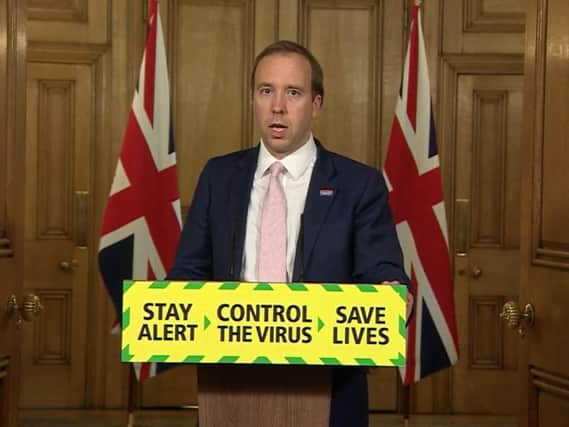Health Secretary defends new direction for contact-tracing app


At the Downing Street press conference he said testing on the Isle of Wight uncovered a “technical barrier”.
“We found that our app works well on Android devices but Apple software prevents iPhones being used effectively for contact tracing unless you are using Apple’s own technology,” he said.
Advertisement
Hide AdAdvertisement
Hide AdHe said that the NHSX app was better at measuring distance than the Google/Apple model.
“As it stands, our app won’t work because Apple won’t change their system, but it can measure distance.
“And their app can’t measure distance well enough to a standard that we are satisfied with.”
He said: “We have agreed to join forces with Google and Apple to bring the best bits of both systems together.
Advertisement
Hide AdAdvertisement
Hide Ad“We will share our algorithm and the work that we have done on distance calculation and combine that with their work to deliver a new solution.”
That would “bring together some of the best minds to find a solution to this global challenge”.
But Mr Hancock could not say when the contact tracing app would be ready for roll-out.
He told the Downing Street briefing: “We’re working on it. We’re not going to put a date on it I’m afraid because I’m absolutely determined that, whilst this technology can help, it’s got to be working effectively.
Advertisement
Hide AdAdvertisement
Hide Ad“But I am confident we will get there – we will put that cherry on Dido’s cake.”
Mr Hancock also set out who could be first in line for a coronavirus vaccine if one is proven to be effective.
He said the joint committee on vaccination and immunisation had published interim advice.
“They recommend priority vaccination for two groups: frontline health and social care workers and those at increased risk of serious disease and death from coronavirus,” he said.
Advertisement
Hide AdAdvertisement
Hide AdThat would include the over-50s and those with heart and kidney disease.
“As we learn more about the virus we will continue to take into account which groups may be particularly vulnerable, including, for example, those from ethnic minority backgrounds so that we can protect the most at risk first, should a vaccine become available, and get this country back on our feet as soon as we possibly can.”